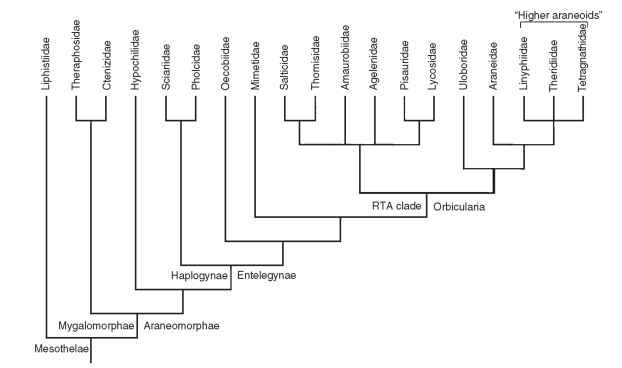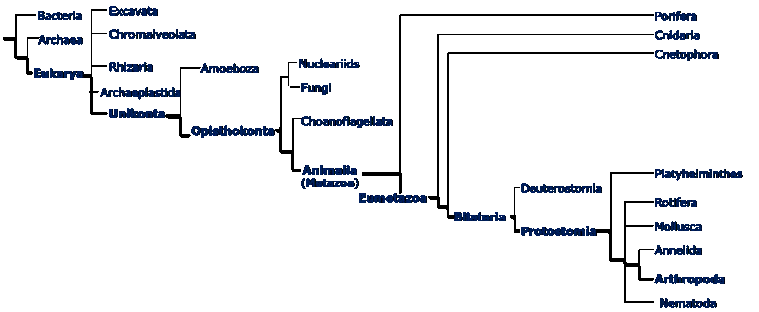Classification
Classification:
Domain: Eukarya
Kingdom: Animalia
Phylum: Arthropoda
Class: Arachnida
Order: Araneae
Family: Theraphosidae
Genus: Brachypelma
Species: B. vagans
Domain: The Redrump Tarantula belongs to the domain Eukarya
because it obtains a true nucleus, and membrane bound organelles.
These same traits can be seen in many organisms we know even
wasabi! Learn more about
wasabi.
Kingdom: B. vagans fall under the kingdom Animalia
because they are heterotrophic, multicellular, eukaryotic
organisms that are motile during at least one stage of life.
From the tiny
deer tick to the massive
blue whale many of the
species you see everyday fall in this magnificant kingdom.
Phylum: B. vagans belong to the phyla Arthropoda because they
have a chitinous exoskeleton, a segmented body, and jointed
appendages. These are the organisms that make your mom shreek!
Click
here to learn about one of our other arthropod friends whose
just jumping with joy to meet you!
Class: This tarantula belongs to the class Arachnida, which is
actually belongs to the subphylum Chelicerata. These organisms
typically have 8 legs, and 2 more pairs of appendages used for
feeding, movement, and other sensory adaptations.
Order: B. vagans are part of the order Araneae, most commonly
referred to as the spiders. Araneae have 2 tagmata (cephlothorax
and abdomen), four pairs of legs, and no antennae.
Family: Redrump Tarantula’s are classified with the family
Theraphosidae. These organisms, called tarantulas, are often
very large and hairy. The most obvious synapomorphy for this
family is the dominance of scopula on tarsus of legs. (cite)
Genus: Organisms belonging to this genus are the only tarantula
genus that is completely protected, due to habitat destruction
and pet-trade collection (cite). These tarantulas are native to
Central America, including; Mexico, Costa Rica, Guatemala, and
Panama. Furthermore, there are 21 tarantula species belonging to
this genus, including B. vagans.
Species: B. vagans, or the Mexican Red Rump Tarantula, are known
for their red coloured hair on their abdomen. They are commonly
kept and bred in captivity, but are prevalent in Central
American countries, along with many other species of tarantulas.
Phylogeny:
Phylogenetic
trees help visually describe relationships with other closely
related organisms. The following trees will aide the
relationship comparisons, as well as provide you with visual
aide to better understand where this organism fits in the grand
scheme of things.
The first
phylogenetic tree will illustrate a broader picture of the
evolutionary relationships that Arthropods obtain.
The tree above illustrates the evolutionary relationship
arthropods have with other animals belonging to the Phylum Animalia,
and where they fall in the big picture of life. Beginning with the
major clade that B. vagans belong to, Opisthokontan organisms all
obtain a posterior flagellate in their reproductive cells, and a
flat mitochondrian cristae. Moving on, B. vagans are part of the
kingdom Animalia, which are all multicellular and motile at some
point in life. Arthropods, which include insects, arachnids, and
crustaceans, are most closely related to their fellow Protostomes.
These organisms are all triploblastic, have bilateral symmetry, and
more importantly develop their mouth before their anus during
embryol development, and they molt. As noticed in the tree,
Arthropods are most closely related to the Phyla Nematoda, and more
distantly related to their fellow Prostomal relatives Mollusca,
Annelida, and Platyminthes.
The next
phylogenetic tree exhibits a more specified illustration of the
evolutionary relationships among the order Araneae.

Here, this tree shows the different relationships among spiders. As
stated previously and shown on the tree, B. vagans belongs to the
family Theraphosidae, which is located on the top-left corner of the
tree. These spiders, often called Tarantulas, are
most closely related to the family Ctenizidae. Each family has distinct
features that separate them from other spiders. Tarantulas are
typically hairy and large, but also have scopula on the tarsus of
their legs.
Now that you are well informed about the Classification of B. vagans, click here to learn more about the habitat this spider obtains.
